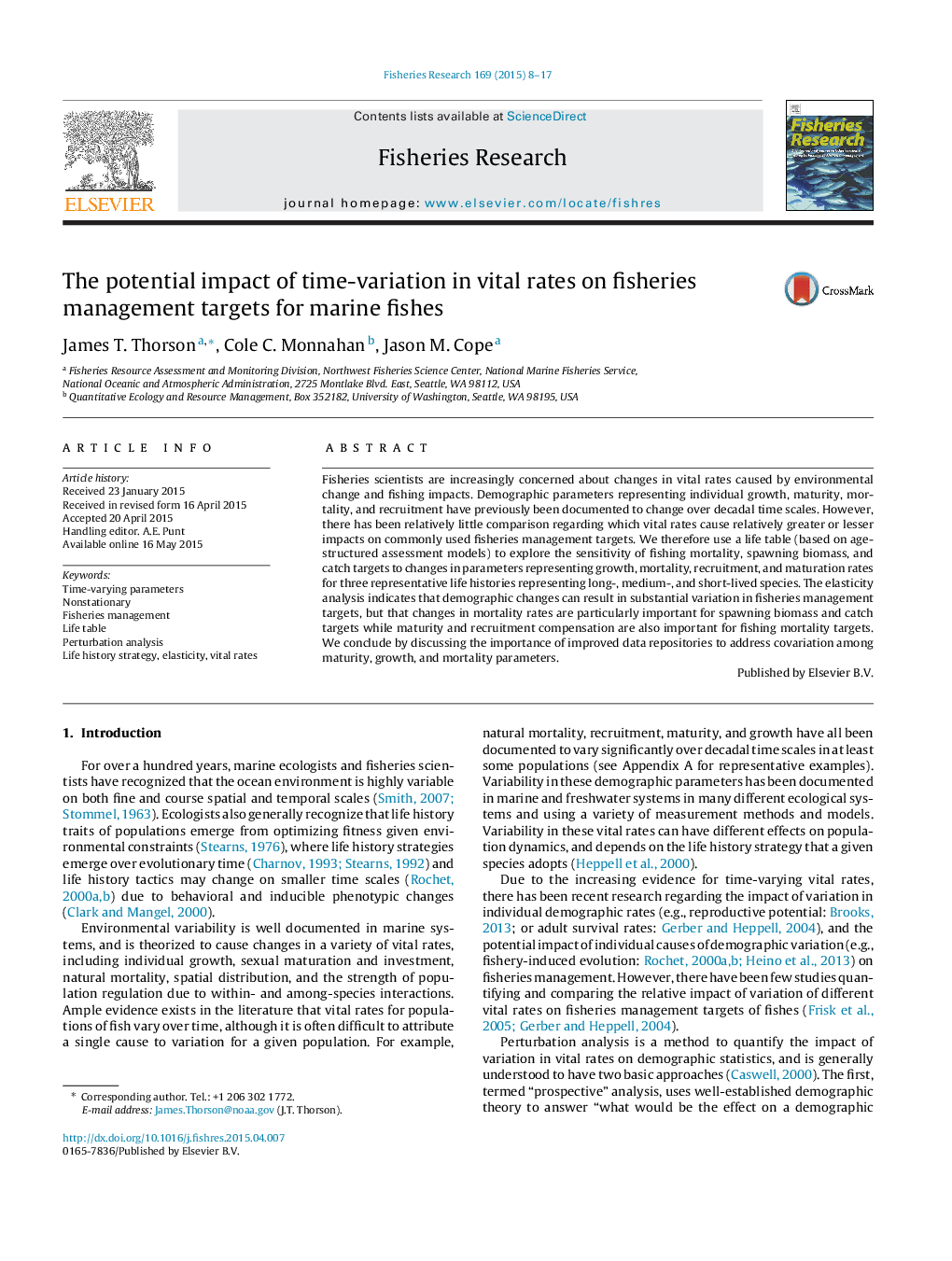| Article ID | Journal | Published Year | Pages | File Type |
|---|---|---|---|---|
| 4542843 | Fisheries Research | 2015 | 10 Pages |
•Vital rates including individual growth, mortality, maturity, and recruitment likely change over time.•Fisheries management targets are highly sensitive to these demographic rates.•The sensitivity can be quantified for different life history types using elasticity analysis.•At least one management target is sensitive to every demographic parameter.•Natural mortality generally has greater elasticity than other vital rates.
Fisheries scientists are increasingly concerned about changes in vital rates caused by environmental change and fishing impacts. Demographic parameters representing individual growth, maturity, mortality, and recruitment have previously been documented to change over decadal time scales. However, there has been relatively little comparison regarding which vital rates cause relatively greater or lesser impacts on commonly used fisheries management targets. We therefore use a life table (based on age-structured assessment models) to explore the sensitivity of fishing mortality, spawning biomass, and catch targets to changes in parameters representing growth, mortality, recruitment, and maturation rates for three representative life histories representing long-, medium-, and short-lived species. The elasticity analysis indicates that demographic changes can result in substantial variation in fisheries management targets, but that changes in mortality rates are particularly important for spawning biomass and catch targets while maturity and recruitment compensation are also important for fishing mortality targets. We conclude by discussing the importance of improved data repositories to address covariation among maturity, growth, and mortality parameters.
